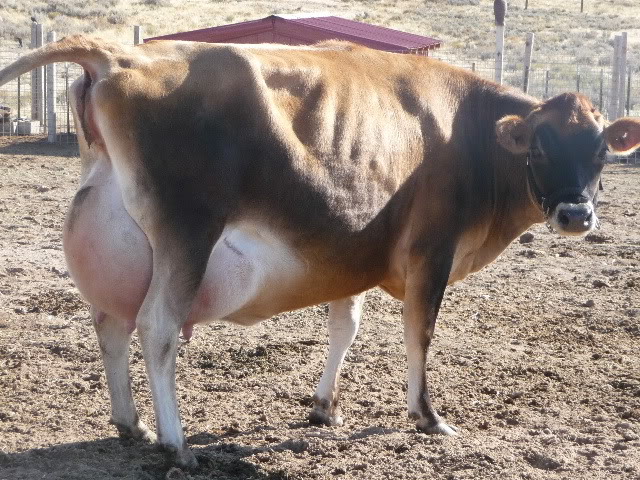Fluid balance in the post partum cow – udder edema
Have you ever asked yourself why there are cows coming into milk with more udder edema than others? Is it related to the time in utero? A hard calving? Age of the cow/heifer? Genetic causes? Feed related issues? Environmental circumstances?
In depth discussion paper:
https://dairy-cattle.extension.org/prevention-of-udder-edema-in-dairy-cows/

Preventing Udder Edemas in Dairy Cows Like other metabolic diseases which appear at calving time. The causes of udder edema can usually be traced to feeding and management practices during the dry period. In udder edema, there is an accumulation of fluid in the udder. Accumulation begins at the base of the udder and, in mild cases, may be present around only one or two quarters. As the severity of the edema increases, the entire udder becomes affected and fluid may spread through the abdominal area, the thighs and vulva. You can see a severe case on above picture.
There does not appear to be one single cause of udder edema. Normal metabolic changes, genetics and nutrition likely all play a role. Cows experience some edema prior to calving due to hormonal and physiological changes, which take place prior to calving. Heifers are more prone to udder edema.
Theories about edema:
- Increasing pressure, caused by fetal growth, results in a restriction of blood and lymph flow away from the udder in late pregnancy. This occurs concurrently with an increased blood flow to the udder. Smaller blood vessels and a reduced fluid flow is likely the reason why heifers are more prone to udder edema than are cows.
- There is a drop in blood proteins as the cow transfers immunoglobulins (proteins) to colostrum. This is thought to increase the permeability of the blood vessels allowing an increase in fluid buildup.
- Changes in hormone levels are also believed to play a role in udder edema.
- Genetics play a role in increased susceptibility to udder edema as an inherited trait.
There are several nutrition factors implicated in udder edema.
a) High intakes of potassium during the dry period predispose cows to udder edema by increasing fluid retention. Potassium levels in dry cow forages are often over 2% – much higher than required. Feed forages with low potassium such as grass (eg. timothy) hays and corn silage (in limited amounts) during the dry period. Intake of potassium should not exceed 250g.
b) High sodium (ie. salt) intake also predisposes cows to udder edema by increasing fluid retention. Limit salt intake during the dry period to 30g (one ounce) per day. If salt is fed free choice, provide it in block form rather than loose as this will decrease consumption. Remove any sodium bicarbonate buffer, which may be present in the feed, typically from the milking cow diet. Check the water for sodium levels as some areas in Manitoba have high sodium, or salty, water.
c) Low magnesium during the dry period has been implicated in udder edema. Ensure close-up dry cow rations contain 0.4% magnesium.
d) Excessive grain intakes prior to calving have been associated with increased incidence of udder edema. Feed a dry cow diet that is properly balanced for protein and energy.
e) Ensure levels of zinc and vitamin E are adequate in the close-up dry period (40 mg/kg and 1200 IU/day respectively). Both help to reduce the effects of oxidative stress on the udder. Oxidative damage can be triggered by the release of iron in times of stress, trauma or nutritional imbalance.
f) Ensure adequate water intake so that the fluid balance of the post partum cow does not get negatively affected. If salt intake is reduced, thirst decreases and the animal may end up dehydrated. This is very dangerous and can lead to the body holding water in. This then in affect increases edema – the exact opposite of what you are shooting for.
Treatment options:
Treatment includes massages and hot compresses on the affected areas. This stimulates blood flow which aids in the removal of the excess fluid. Through all this it is crucial that the cow be completely milked every time. Udder edema is a risk factor for development of clinical mastitis and occasionally can become a chronic condition that persists throughout lactation. Treatment should be initiated if swelling threatens the udder support apparatus or if edema interferes with the ability to milk the cow. Edema can be treated by milking cows before parturition. Positive effects of pre-milking in heifers have been reported, but the practice may predispose older cows to parturient paresis (milk fever). Massage, repeated as often as possible, and hot compresses stimulate circulation and promote edema reduction. Diuretics have proven highly beneficial in reducing udder edema, and corticosteroids may be helpful. Products that combine diuretics and corticosteroids are available for treatment of udder edema.